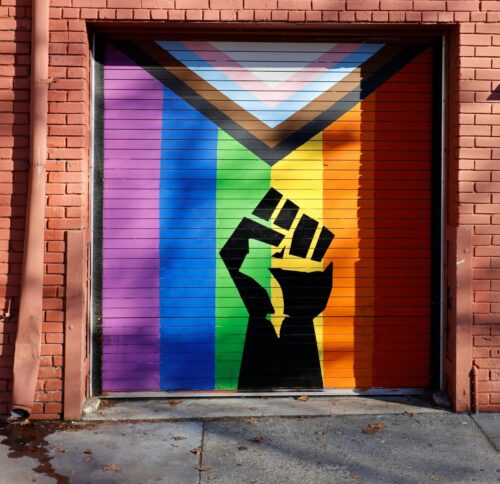
Supporting Black Queer Students: From Invisibility to Empowerment
posted on: 12-07-2024
“They graduated.”
That was my colleague’s response when I asked about a student on the verge of flunking out of high school. Two years earlier, I met the student—a 10th grader burdened by responsibilities no child should bear. They worked multiple jobs to support their family, often handing over their earnings to their mother, and moved between hotel rooms with no sense of stability.
School felt like an afterthought. Yet, despite missing classes, they never missed a meeting of their school’s Gender & Sexuality Alliance (GSA) club. This club, made up of primarily Black students, became their anchor. It was more than a space to gather—it was a family.
I remember visiting the club one day and overhearing two teachers who led it:
“There was a fight earlier today.”
“Was one of ours involved?”
These educators weren’t just club advisors; they were mentors, advocates, and trusted adults who kept their students tethered to something stable. They encouraged members to show up—not just to meetings but to themselves. This student, weighed down by a lack of support at home and school, found hope, encouragement, and belonging in that GSA. They found the strength to persevere and graduate.
The Reality for Black Queer Students
Black queer youth often face staggering challenges. Nearly 80% report verbal harassment on school campuses, with 41% indicating physical harassment—the highest rates among all LGBTQ+ youth surveyed. Many lack support at home, leaving schools as their safest refuge. Yet their voices are often silenced, and their identities remain invisible in spaces that fail to recognize or affirm them.
In predominantly Black spaces, this invisibility can be especially pronounced. Black queer youth often hide their identities for fear of being ostracized from communities they hold dear. When caring adults assume these students “aren’t there” or adopt a stance of tolerance instead of true inclusion, they perpetuate the isolation these students already feel.
But when Black queer youth find spaces that affirm and celebrate their full selves, the impact is profound. Self-esteem rises, attendance improves, engagement deepens, and the likelihood of graduation soars.
Building Safe and Supportive Spaces
The success of Black queer students depends on our willingness to act. Here’s how we can do better:
- Normalize Representation: Integrate Black LGBTQ+ stories into curriculum and celebrate diverse identities in classroom discussions. Show students they belong.
- Adopt Inclusive Policies: Advocate for school policies that explicitly protect LGBTQ+ students from bullying and discrimination. Make these protections visible and enforceable.
- Support GSAs and Safe Spaces: Invest in student-led organizations like GSAs, ensuring they are well-resourced and promoted as havens of support.
- Provide Cultural Competency Training: Equip educators with the tools to understand and address the intersections of race, gender, and sexuality. Emphasize the unique challenges Black queer students face.
- Listen to Their Voices: Create opportunities for Black queer youth to share their experiences through listening sessions or anonymous feedback channels. Act on what you learn.
From Hope to Action
The story of that GSA graduate is not an anomaly—it’s a reminder of what’s possible when we create intentional, affirming spaces for Black queer youth. Their success was not a result of sheer resilience but of being seen, supported, and valued.
Supporting Black queer students means moving beyond mere tolerance to true inclusion. It means building schools and communities where these students can thrive.
Their future depends on us—and so does ours.